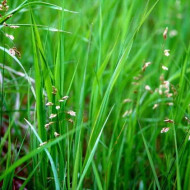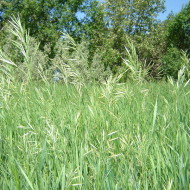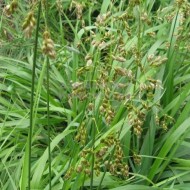What does bison grass look like and where is it used?
Content
Description and area of distribution of bison
Botanists classify the culture as a perennial of the Myatlikov family. It is popularly known under different names: lyadnik, fragrant chapoloch, turovka. Here is a detailed description of the plant:
- The rhizome is elongated, branching, creeping. Covered with bundles of thin standing roots grouped into nodes.
- The stem is straight, smooth, covered with nodules. It grows up to 40-100 cm.
- The foliage located closer to the ground is green, up to 50 cm, lanceolate. Above the trunk, it acquires a grayish tint, shortening to 3 cm.
- Panicle inflorescences of spikelet type, friable. The color is silvery brown.
- Fruits with small seeds, dark brown. Fruiting occurs in August.
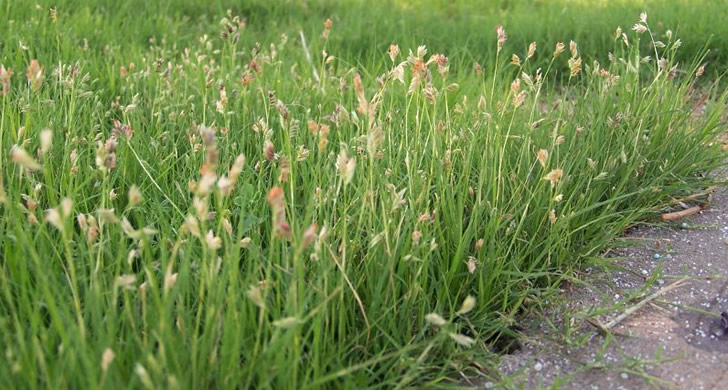
The growing season falls at the end of May, by mid-June, the seeds fall off, and the stem dries up. The culture is cold resistant. The taste of greens is tart with an admixture of bitterness.
In our country, bison grows everywhere, from European regions to Siberia and the Far East. Also, the culture is widespread in the Caucasus and Ukraine. In the wild, the grass grows:
- along the roads;
- in coniferous and deciduous forests;
- on the banks of rivers;
- in thin thickets;
- on the slopes of low mountains.
Varieties of culture
In total, there are about 30 varieties of bison in nature, although only 8 species are widespread. In Russia, there are only 3:
- fragrant, so named for its tangible aroma;
- steppe, widespread in the vastness of the country;
- southern, growing in the western regions of Russia, is a rare species, but it is it that is more often used in cooking.
Healing properties are inherent in all known varieties of culture.
- Fragrant
- Stepnaya
- South
Chemical composition and useful properties
For folk recipes, only the aerial part of the plant is suitable (inflorescences and roots are not used). The stem and leaves contain components such as:
- vitamin C (ascorbic acid);
- the whole group of vitamins B and PP;
- organic acids;
- alkaloids;
- bitterness;
- coumarin;
- umbelliferone.
It is coumarin that is responsible for the pleasant scent of the herb. In addition, the culture is rich in trace elements, including iron and phosphorus, potassium and calcium, copper, zinc and many others.
Due to the presence of ascorbic acid, the plant is used as an antioxidant, strengthening bone tissue and normalizing metabolism. Ferulic acid slows down the aging of skin cells, protects against sunburn. Alkaloids keep your muscles toned. Bitterness makes you appetite.
Zubrovka also has other useful properties:
- stimulates milk production in nursing mothers;
- has an antiseptic effect;
- stabilizes the work of the heart and blood vessels;
- helps to fight stress;
- has a tonic effect;
- stops bleeding;
- resists bacteria.
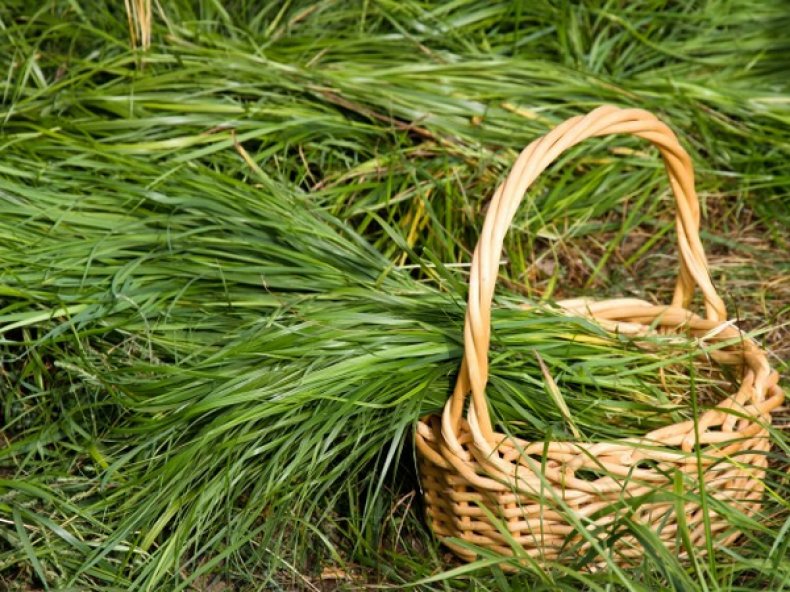
Harm and contraindications for use
Although the doctors did not record a direct negative effect from bison, there is a risk of side effects associated with an overdose. This means that any medications that contain bison should be taken only after consulting a doctor.
Here is a list of possible negative factors:
- Headache.
- The appearance of a bitter taste in breast milk. Glacier should not be used in large quantities to enhance lactation.
- Deterioration of the well-being of farm animals that received grass in the form of feed.
Zubrovka is not used in official medicine; caution should be exercised when taking traditional medicine.
Here is a list of ailments for which the use of bison is contraindicated. It is categorically impossible to use the herb when:
- diseases of the gastrointestinal tract;
- individual culture intolerance;
- trouble sleeping;
- nervous disorders;
- pregnancy.
Video "Description and application of bison grass"
This video describes the benefits and uses of herbaceous perennial.
Scopes of bison herb
Pleasant taste, useful components and delicious aroma allowed the culture to become in demand in various sectors of the national economy. All the constituent herbs have their own value.
In folk medicine
Traditional connoisseurs have long included bison herb in many recipes. The stem of the plant and foliage are considered useful; on their basis, water infusions and alcoholic tinctures are prepared. Dried aromatic bison is used as a raw material for the preparation of potions.
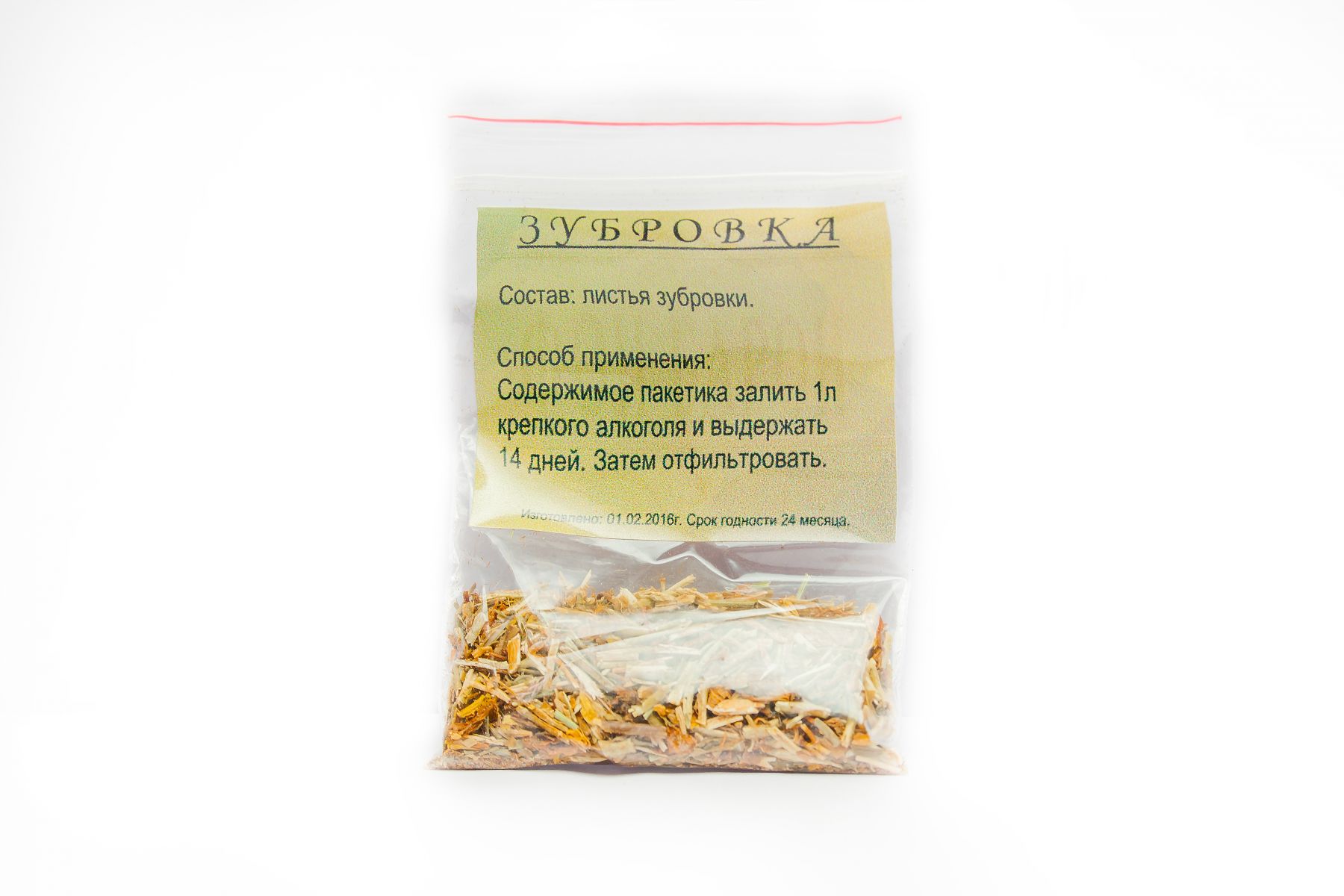
To strengthen the immune system
The infusion is often drunk as a preventive measure as a general tonic. The concentration of herbs should be kept to a minimum. For this:
- 10 g of green leaves or shoots are crushed;
- pour a glass of boiling water and leave for 10 minutes;
- filter through cheesecloth.
You need to drink the product warmed up, 1/2 cup 3 times a day before meals.
To increase appetite
Here is a recipe that helps to improve appetite, relieve fatigue and alleviate suffering in case of disturbances in the digestive system.
The recipe is as follows:
- 1 tablespoon of raw materials is poured with a glass of boiling water and steamed in a water bath;
- after 30 minutes, the tincture is filtered, the thick is squeezed out.
Take the drug 1 tablespoon 3 times a day before meals.
With a fever
Bison broth helps to cope with fever The same recipe is shown for reduced gastric acid secretion. The broth is prepared as follows:
- 2 tablespoons of dried herb pour 0.5 liters of drinking water;
- bring the composition to a boil and keep on low heat, covered with a lid, for 10 minutes;
- remove from heat, leave to infuse for 20 minutes;
- strain.
It is recommended to take the broth 3 times a day, 50-60 ml.
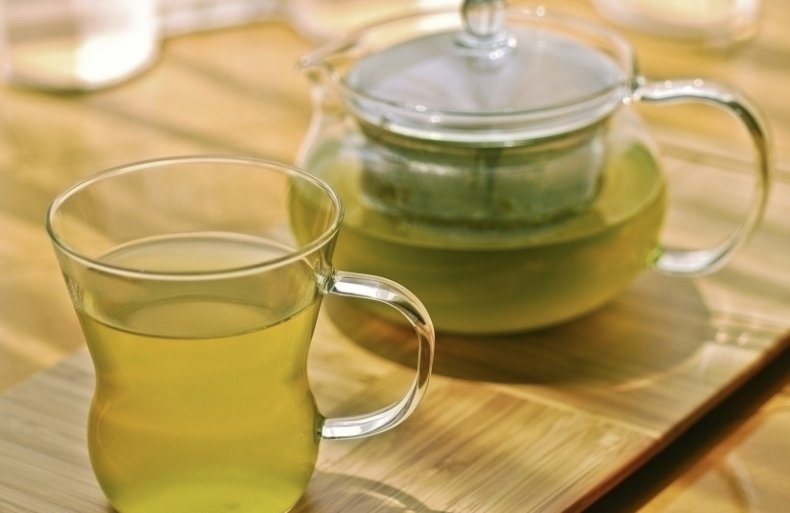
For diseases of the stomach
In case of disorders in the work of the gastrointestinal tract, an infusion of bison helps. Here are several cooking options.
- 1 tablespoon of dried raw materials is poured into 1.5 cups of boiling water, insisted for about an hour, filtered. It is recommended to drink a tablespoon 3 times a day half an hour before meals.
- 20 g of raw materials are poured with a glass of boiling water, then simmer over low heat for 10 minutes. Then they insist and filter for about an hour. Take 2 tablespoons 4 times a day.
With colitis and anorexia
The recipe for the medicine is as follows:
- 50 g of the dried culture is ground;
- pour 0.5 liters of vodka;
- leave to infuse for 10 days in a cool dark place;
- after the expiration of the period, filtered.
The tincture is taken 2-3 times a day, taking 30-40 drops into a container and diluting with filtered water.
With tuberculosis
The herbal infusion does not cure the disease itself, but it helps relieve symptoms. It is especially effective in the pulmonary form. The recipe is as follows:
- 1 tablespoon of raw materials is crushed, then poured with a glass of boiling water;
- insist for about half an hour;
- filter.
You need to drink 3-4 times a day, a couple of tablespoons 15 minutes before meals.
In cooking
The range of application of bison is wide. It is used in:
- the creation of alcoholic beverages;
- baked goods and confectionery;
- pickling products;
- making seasonings.
The famous herb-based tincture Zubrowka has been produced in European countries for several centuries. Thanks to the plant, the drink has a rich spicy aroma; in many families it is used as a decoration for church holidays.
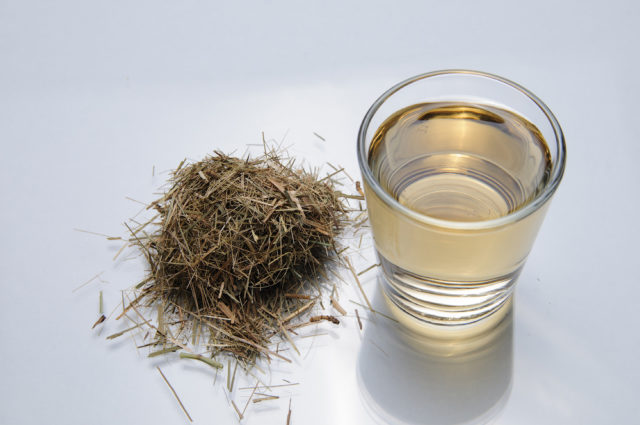
Another application is the production of honey liqueurs, which began to be prepared on the territory of modern Poland in the 16th century. The famous Polish martini should also be mentioned.
Confectioners appreciated bison as a useful essence that gives dishes a special taste and aroma.
You can meet herbal spices in canned fish. Pharmacies sell bison-based essential oil with the scent of freshly cut grass.
In dietetics
Often overweight people brew and drink teas at bison for dietary purposes. But you should not use the ability of culture to speed up metabolism in an effort to lose weight. Bison tea, alas, does not burn fat, but only increases sweating. With frequent use, harmful coumarin toxins accumulate in the body.
In cosmetology
Broths of the lover are often used in home cosmetology, if they want to tidy up the skin. Also, the drug helps to strengthen the hair. The infused herb baths promote quick healing of foot fungus.
In agriculture
On industrial farms, small doses of grass are used for their intended purpose - as feed for farm animals. The cattle will gladly eat the treat. Such feed is especially useful for dairy goats and cows - milk yield increases markedly.
Rules for the preparation and storage of bison
When collecting, you need to pay attention to the part that rises high above the ground, without affecting the panicle inflorescences and foliage located at the very roots. Usually barren shoots are cut off, the panicles are removed. Later, the stems and leaves are dried in an open place in the shade, where there is protection from precipitation.
You can dry in two ways:
- spread out in one layer on paper or dry boards;
- hanging bunches of plants under a canopy.
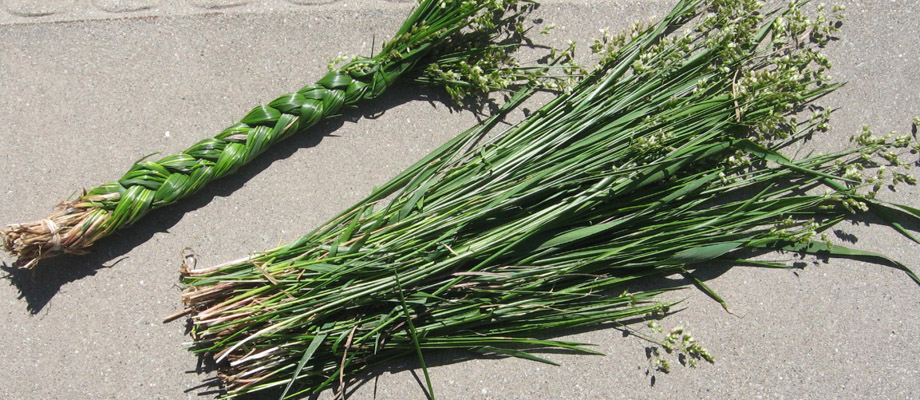
Dried herbs are crushed for convenience, then poured into paper or cloth bags. Raw materials are stored for no more than 2 years in a room with good ventilation and low humidity at a temperature not exceeding 20 ° C.
If desired, bison grass can be grown in a summer cottage. This will allow the owner to always have on hand a sufficient supply of raw materials, the use of which in cooking and healing is difficult to overestimate.

